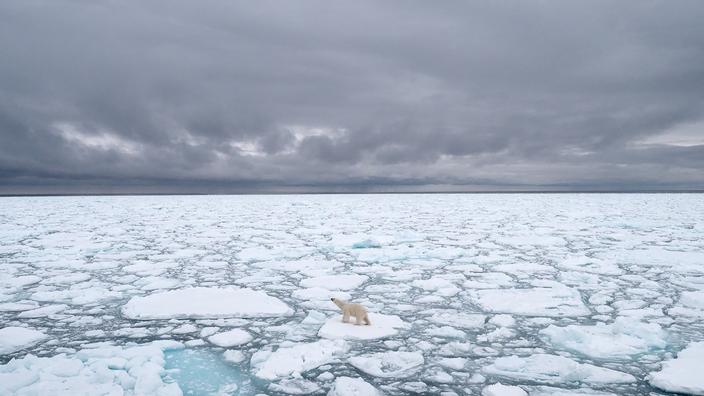According to the researchers, its thickness was previously estimated by evaluating the height of the ice above the water, which is a skewed measurement of the amount of ice suspended above the ice pack.
Ice on Arctic coasts is melting at up to twice the speed estimated so far, according to a study released Friday by University College London (UCL), with worrying implications for global warming. The study published in the journal cryosphere, concludes that ice in major coastal Arctic regions is shrinking 70 to 100% faster than consensus.
Read also:In the Red Sea, coral reefs are resistant to high water temperatures
The reason for this dramatic reassessment: the researchers’ use of newer maps of snow depth over the ice, this time taking into account the impact of decades of climate change. The thickness of the ice pack is actually estimated by measuring the height of the ice above the water, which is a distorted measurement of the amount of ice suspended above the ice pack.
“Previous calculations of the thickness of the ice pack were based on the recently updated snow map 20 years agoSaid PhD student Robbie Mallett who led the study. “When an ice pack begins to form later in the year, the snow that covers it has less time to accumulate”, continued. “Our calculations take this drop into account for the first time and indicate that sea ice is melting faster than we thought.”
Read also:A study shows that rising oceans have raised the Earth’s temperature by 1.5 degrees Celsius
The researchers used an ESA satellite to calculate the height of the ice above the water and derive its actual total thickness, supplementing this estimate with a new model for calculating snow thickness, developed with Colorado State University (USA). Taken together, these results allowed them to measure the overall rate of ice decline, as well as its variability from year to year.
This constitutes ‘Great progress’ to make “More accurate interpretation of data we receive from satellites”Co-author of the report, Professor Julian Struve, said the Arctic is warming three times faster than the global average. Sea ice fish also makes up a A sensitive indicator of Arctic health.Ruby Mallet added. “It is important because the thicker ice acts as an insulating cover, preventing the ocean from warming the atmosphere in the winter, and protecting the ocean from the sun’s rays in the summer.”, he explained, adding that a Thin ice was also less likely to survive during the summer melt..

“Professional food nerd. Internet scholar. Typical bacon buff. Passionate creator.”





